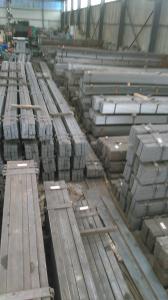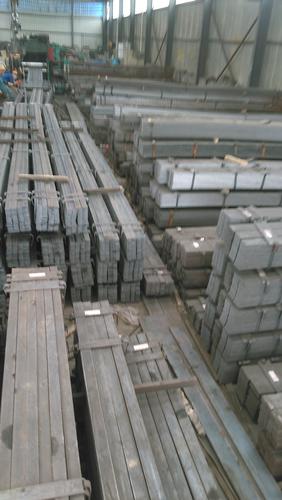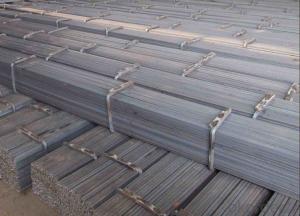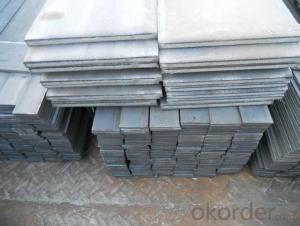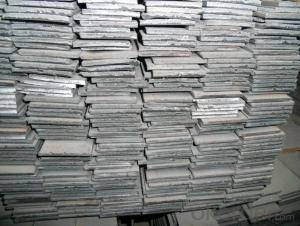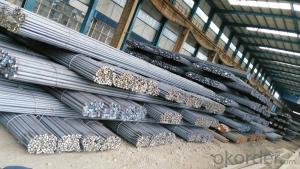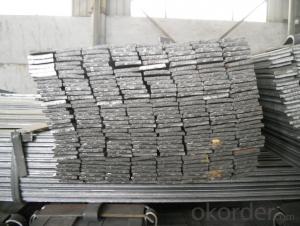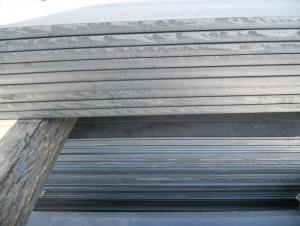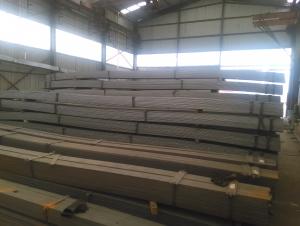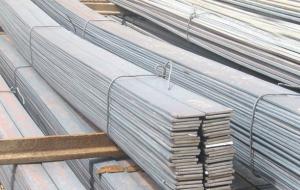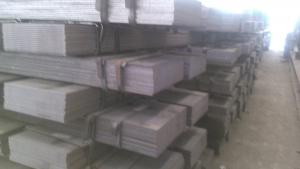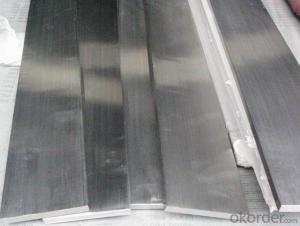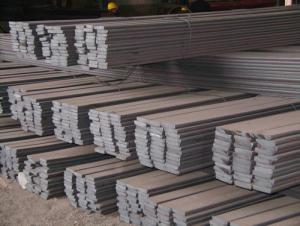Steel Flat Bars Low Carbon with Width 15mm-1250mm
- Loading Port:
- Tianjin
- Payment Terms:
- TT or LC
- Min Order Qty:
- 50 m.t.
- Supply Capability:
- 10000T m.t./month
OKorder Service Pledge
OKorder Financial Service
You Might Also Like
Product Description:
OKorder is offering Steel Flat Bars Low Carbon with Width 15mm-1250mm at great prices with worldwide shipping. Our supplier is a world-class manufacturer of steel, with our products utilized the world over. OKorder annually supplies products to African, South American and Asian markets. We provide quotations within 24 hours of receiving an inquiry and guarantee competitive prices.
Product Applications:
Steel Flat Bars Low Carbon with Width 15mm-1250mm are ideal for structural applications and are widely used in the construction of buildings and bridges, and the manufacturing, petrochemical, and transportation industries.
Product Advantages:
OKorder's Steel Flat Bars Low Carbon with Width 15mm-1250mm are durable, strong, and wide variety of sizes.
Main Product Features:
· Premium quality
· Prompt delivery & seaworthy packing (30 days after receiving deposit)
· Can be recycled and reused
· Mill test certification
· Professional Service
· Competitive pricing
Product Specifications:
Manufacture: slited
Slitting precision (width) : 0.5 mm or less
Raw material: Q235B, Q345B, Q235-1 b
crosscutting precision (length) : 2 mm or less
Processing: the thickness of 2.0-16 mm;
Shear length: 2000 mm above
Wide degree: 15-1250 - mm;
Leveling precision: 1-2 MM square
Packaging: Export packing, nude packing, bundled
Trademark | Rank | Chemical composition (quality score) % | |||||
C | Si | Mn | S | P | |||
≤ | ≤ | ≤ | |||||
Q235 | A | 0.14-0.22 | 0.30 | 0.30-0.65 | 0.050 | 0.045 | |
Q235 | B | 0.12-0.20 | 0.30 | 0.30-0.70 | 0.045 | 0.045 | |
Trademark | Rank | Pulling Test | |||||
Bend PointΔs/Mpa | Tensile Strength | Elongation Ratioδ5% | |||||
Thickness (Diameter) /MM | Thickness (Diameter) /MM | ||||||
≤16 | 16-40 | ≤16 | 16-40 | ||||
≥ | ≥ | ||||||
Q235 | A | 235 | 225 | 375-500 | 26 | 25 | |
Q235 | B | 235 | 225 | 375-500 | 26 | 25 | |
FAQ:
Q1: Why buy Materials & Equipment from OKorder.com?
A1: All products offered byOKorder.com are carefully selected from China's most reliable manufacturing enterprises. Through its ISO certifications, OKorder.com adheres to the highest standards and a commitment to supply chain safety and customer satisfaction.
Q2: How do we guarantee the quality of our products?
A2: We have established an advanced quality management system which conducts strict quality tests at every step, from raw materials to the final product. At the same time, we provide extensive follow-up service assurances as required.
Q3: what is the difference between actual weight and theoretical weight?
A3: All the section steel has two weights: actual weight and theoretical weight. Actual weight is the weighing out when the product delivered from the mill. Theoretical weight is calculated by pieces. The invoice can be based on each of them as your request.
Images:
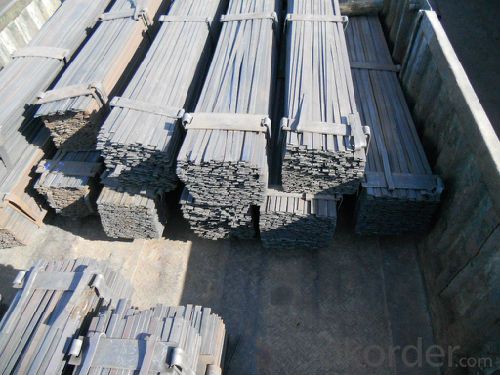
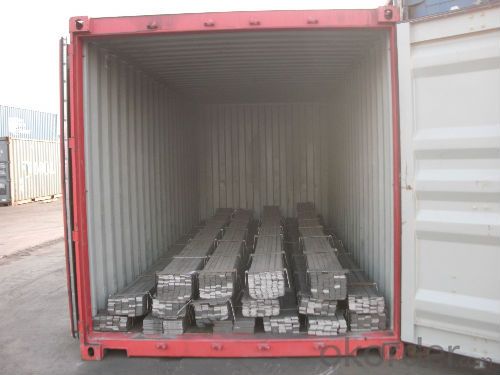
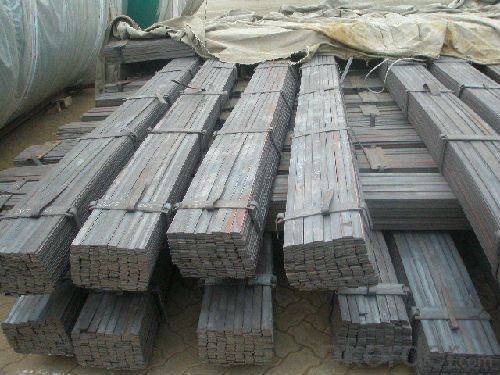
- Q: How to grounding lightning protection grounding?
- The main rib of the column is larger than 16MM in diameter and is connected with the galvanized steel bar which is connected with the ground.
- Q: What is the maximum width available for steel flat bars?
- The maximum width of steel flat bars is determined by several factors, including the manufacturing process, the type of steel used, and the chosen supplier or manufacturer. However, steel flat bars are generally offered in a wide range of widths to accommodate different applications. Typical widths for steel flat bars can range from approximately 1/8 inch (3.175 mm) to 12 inches (304.8 mm) or even wider. Nevertheless, it is important to understand that these measurements are not fixed limits and may vary depending on the supplier or manufacturer in question. To ensure the maximum width of steel flat bars for your specific project, it is advisable to consult a reliable supplier or manufacturer who can provide guidance based on your requirements.
- Q: Can steel flat bars be used for making brackets or supports for telecommunications towers?
- Yes, steel flat bars can be used for making brackets or supports for telecommunications towers. Steel is a strong and durable material that can provide the necessary structural support for these towers. The flat shape of the bars allows for easy fabrication and attachment to the tower structure. Additionally, steel is resistant to environmental factors such as corrosion, making it suitable for outdoor applications. However, it is important to ensure that the steel flat bars used meet the required specifications and standards for telecommunications tower construction to ensure the safety and stability of the structure.
- Q: How do you prevent distortion or warping on steel flat bars during machining?
- To prevent distortion or warping on steel flat bars during machining, there are several measures that can be taken: 1. Proper Material Selection: Choosing the right type of steel with suitable mechanical properties for the machining process is crucial. Opting for steel with a low carbon content can reduce the likelihood of distortion. 2. Stress Relief Annealing: Prior to machining, heat treatment techniques such as stress relief annealing can be applied to reduce any residual stresses within the steel. This process involves heating the steel to a specific temperature and then allowing it to cool slowly, which helps to minimize distortion. 3. Adequate Fixturing: Using appropriate fixturing methods during machining can help to secure the steel flat bars firmly in place. This will prevent movement or flexing that could lead to distortion. Clamping the bars securely using vices or other means can be effective in this regard. 4. Proper Machining Techniques: Employing the right machining techniques is crucial to prevent distortion. It is important to avoid excessive cutting forces or high cutting speeds that may generate excessive heat, leading to distortion. Utilizing appropriate cutting tools, feeds, and speeds can help to maintain control over the machining process. 5. Cooling: Ensuring effective cooling during machining is essential. Using coolants or lubricants can help dissipate heat generated during the machining process, which can aid in preventing distortion. 6. Machining Sequence: Planning the machining sequence in a manner that minimizes the accumulation of heat in localized areas can help prevent distortion. Distributing machining operations evenly across the steel flat bar can help maintain its overall shape and minimize the risk of warping. By implementing these preventive measures, distortion or warping on steel flat bars during machining can be significantly reduced, resulting in better quality and dimensional accuracy of the finished product.
- Q: Can steel flat bars be used for staircase construction?
- Staircase construction can indeed involve the utilization of steel flat bars. These bars are commonly employed as stringers, which serve as the supporting framework for the treads and risers of a staircase. By providing robustness and steadiness, steel flat bars facilitate the creation of staircases that can be adapted to diverse architectural styles. Furthermore, these bars exhibit durability, corrosion resistance, and ease of welding or bolting, ensuring the development of a sturdy staircase structure. Moreover, they can be tailored to meet specific design requirements and adorned with various coatings or treatments, thereby enhancing both protection and aesthetics. In summary, steel flat bars represent a versatile and dependable option for the construction of staircases.
- Q: What are the different heat treatment processes for steel flat bars?
- There are several heat treatment processes that can be applied to steel flat bars to enhance their mechanical properties and improve their overall performance. Some of the commonly used heat treatment processes for steel flat bars include: 1. Annealing: This process involves heating the steel flat bar to a specific temperature and then slowly cooling it to room temperature. Annealing helps to relieve internal stresses, increase ductility, and improve machinability. 2. Normalizing: This heat treatment process involves heating the steel flat bar to a temperature above its critical range and then allowing it to cool in air. Normalizing helps to refine the grain structure, improve mechanical properties, and enhance the overall toughness of the steel. 3. Quenching and tempering: This two-step process involves rapid cooling, or quenching, the steel flat bar in a liquid medium, such as oil or water, to achieve high hardness. This is followed by tempering, which involves reheating the quenched steel to a lower temperature to reduce brittleness and improve toughness. 4. Case hardening: Also known as carburizing, this process involves adding carbon to the surface of the steel flat bar by heating it in a carbon-rich environment. Case hardening creates a hard outer layer while maintaining a softer and more ductile core, enhancing wear resistance and providing a tough surface. 5. Stress relieving: This heat treatment process is used to reduce residual stresses in the steel flat bar that may have accumulated during manufacturing or other processes. It involves heating the steel to a specific temperature and allowing it to cool slowly. Stress relieving helps to minimize distortion and improve dimensional stability. These heat treatment processes can be tailored to meet specific requirements and desired mechanical properties of the steel flat bars, making them suitable for a wide range of applications in various industries.
- Q: Can steel flat bars be used as structural support in buildings?
- Yes, steel flat bars can be used as structural support in buildings. Steel is known for its strength and durability, making it a popular choice for structural applications. Flat bars can be used to provide support and stability in various building elements such as beams, columns, and frames. Additionally, steel flat bars can be easily fabricated and customized to meet specific design requirements, further enhancing their suitability for structural support in buildings.
- Q: What is the price range of steel flat bars?
- The price range of steel flat bars can vary depending on various factors such as size, grade, and supplier. However, generally speaking, steel flat bars can range in price from around $10 to $50 per bar.
- Q: How do you paint or coat steel flat bars?
- To paint or coat steel flat bars, you can follow these steps: 1. Start by cleaning the surface of the steel flat bars to remove any dirt, grease, or rust. Use a wire brush or sandpaper to scrub away the debris. 2. Next, apply a primer specifically designed for metal surfaces. This will help the paint or coating adhere better and provide long-lasting protection against corrosion. 3. Once the primer is dry, you can proceed to apply the desired paint or coating. Use a brush, roller, or spray gun, depending on your preference and the size of the flat bars. 4. Apply multiple thin coats, allowing each coat to dry before applying the next. This will ensure a smooth and even finish. 5. After the final coat is applied, allow the paint or coating to fully cure according to the manufacturer's instructions before handling or using the steel flat bars. This will ensure the durability and longevity of the finish.
- Q: Are steel flat bars suitable for making storage racks?
- Yes, steel flat bars are suitable for making storage racks. Steel flat bars are known for their strength, durability, and versatility, making them an ideal choice for constructing storage racks. They have a high load-bearing capacity, allowing them to safely hold and support heavy objects. Additionally, steel flat bars are resistant to bending and warping, ensuring the longevity of the storage racks. They are also easy to work with and can be welded or bolted together to create custom-sized racks that meet specific storage needs. Overall, steel flat bars provide a reliable and sturdy framework for storage racks, making them a popular choice in various industries and settings.
Send your message to us
Steel Flat Bars Low Carbon with Width 15mm-1250mm
- Loading Port:
- Tianjin
- Payment Terms:
- TT or LC
- Min Order Qty:
- 50 m.t.
- Supply Capability:
- 10000T m.t./month
OKorder Service Pledge
OKorder Financial Service
Similar products
Hot products
Hot Searches
Related keywords
